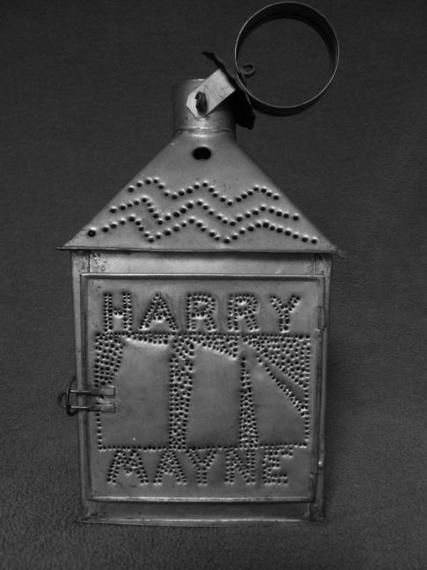My old tin lantern has got to be worth some money. After all, it was in a museum. Just like in Detroit, where the city got to keep their art because a group of foundations stepped up and said, "Wait! Don't sell the art collection to help pay for the city debt!
Detroit kept their art. Should I keep mine? Can I afford to do that?
These are tough times. I should sell the thing. It's winter now. Time to clean house. Time to survive.
And should our home become, like it is for so many, a grocery cart in the windy cold streets, there is no way we can carry the old tin lantern along.
Years ago, in better times, when the major museum curator came to our house to look at the old tin lantern, his eyes got big. Not a trace of artistic pretention. What he said was:
"Wow! I've never seen anything like that. I don't think there is anything like that. If you ever want to sell this, let me know."
But my thought back then was, "That's ridiculous. How could I sell something I'd always had?"
My earliest memories place it on the dresser in my childhood bedroom.
It's a punched tin lantern with a candle inside. Depending on where you start reading, poked into the intricate design as you turn the lantern around, are the words:
"HARRY MAYNE IS COILING A ROPE OF SAND ON THE BAR IPSWICH."
What does that mean? Beats me. I know parts of the answer. But not all of it.
The mystery might be one reason it would be so hard to part with the old tin lantern. To sell it. To do what's practical. What we might need to do to survive.
I'm not exactly sure how the lantern ended up in my childhood bedroom. I likely found it in a dusty corner of the attic, where my mother had stored the legacy of our great-Uncle Arthur Wesley Dow.
He was the artist who made the old tin lantern.
Dow died in 1922. An artist and art educator who worked in oil, wood block, photography, pen and ink, water color and photography. I'm likely leaving one or two out. But as far as I know, he only made one tin lantern. It's the one that is watching over me this very second.
Dows book, Composition, from 1901, is still in print. But back when I dusted off the old tin lantern for the first time, sometime in the 1970s, his work was scattered throughout the world. One painting hung in the Art Institute of Chicago.
Dow and his wife had no children. So when they died, a great deal of his work was handed down through his brother Dana, my mother's great uncle. Beginning with a show at the Smithsonian, my mother then proceded, across the coming decades, to bring Dow back into the national cultural limelight.
The Dow exhibitions, like the one featuring my old tin lantern, at Chicago's now gone Terra Museum of American Art, became common across the country. And as Dow's prized student, Georgia O'Keeffe, spoke out on the influence Dow had on her work, that attracted more than a little bit of attention.
But I never really thought about the old tin lantern as being art. I guess I knew intellectually that it was. But what was more important was the fact that if you un-hatched the little door and lit the candle, then closed the door, the light from the candle would illuminate even the most terrifying cold, dark room. Shooting out gentle beams of light through the tiny tin holes.
Beams of soft tin light. As if there could still be hope illuminating the darkest of rooms. Light beams dancing on dark walls. Bringing hope back.
I have known that lantern as long as I've known myself. That candle is still straight. But there is an awful lot of wax dripping down its sides.
What's new now, though, is that in these times, for so many people, "just getting by" is the goal. Surviving.
Thriving is a memory.
If the rains or the winds came to flatten Chicago into dust, would hanging on to that lantern keep us safe and dry? If we needed that lantern for food, how would it taste? If we got sick, would it offer us a cure?
How would my teeth feel if I chomped down and tried to chew a piece of 19th century tin?
Can I really sell the old tin lantern? Should I sell it? Would selling it be the right thing to do? I still didn't know.
So I lit the old candle.
Then, bathed in those gentle beams of light shooting out through the tiny punched tin holes, I put the lantern back on the shelf and kept writing.
Safe for now.
Would you sell the lantern?
Photo Credit: Roger Wright and M.Nunzio Cancilla.

